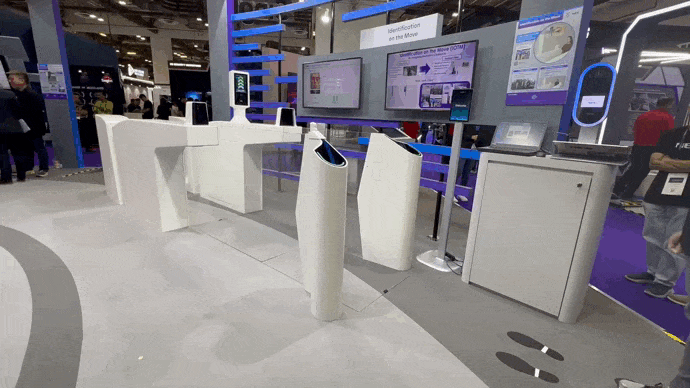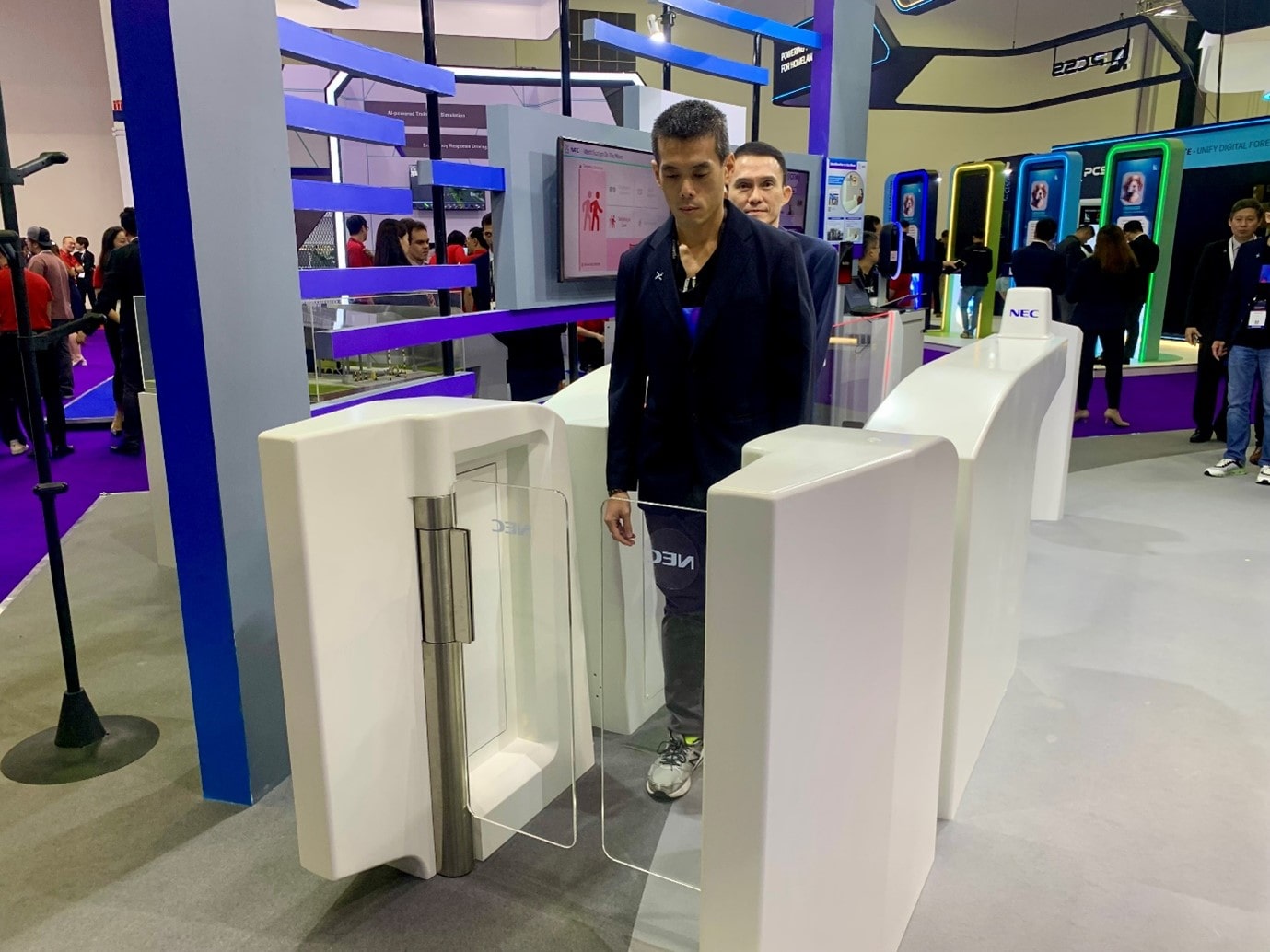Identification on the Move (IOTM) aims to create a seamless “walk-look-clear” biometric identification experience for travellers.

IOTM at a glance. (Photo: HTX)
With the iris scanners at Changi Airport making immigration clearance a breeze, it might be difficult for us to envisage an even more efficient immigration clearance process. After all, clearing immigration nowadays simply entails staring at an iris scanner for a while before making our way through the automated clearance lanes.
However, even the most efficient iris scanners come with their own issues. For example, conventional iris scanning technology is unable to scan the iris of an individual on the move or far away. This inevitably results in a “stop-and-go” clearance process, where one must stop right in front of the iris scanner and wait for it to complete its scan.
With Identification on the Move (IOTM), a prototype conceptualised by HTX’s Biometrics and Profiling Centre of Expertise (B&P CoE) and technologically enabled by NEC, biometrics clearance technology is reaching the next frontier—being able to scan biometric features while an individual is walking.
Ensuring accuracy
Have you ever failed to clear immigration because you are standing a little too far away from the iris scanner? Even if you think you are standing close enough, conventional iris scanners often come with short scanning distances, meaning that they are unable to “see” your biometric features if you stand out of their range.
Fortunately, IOTM can scan iris images at up to almost twice the standoff distance achievable with conventional scanners through its long-range and higher resolution iris scanning capability. This helps create a “walk-look-clear” biometric identification experience where you can breeze through the clearance lane simply by looking at IOTM’s scanners!
Environmental constraints

A live demonstration of IOTM clearing a “traveller” at Milipol Asia-Pacific – TechX Summit. (Photo: HTX)
When it comes to immigration clearance, two things are paramount—speed and accuracy. While IOTM can facilitate the faster screening of travellers, what is also important is that it captures accurate biometric images.
But what could cause IOTM to take poor biometric images? Well, user-related and environmental variables are mostly to blame.
For example, if there are poor environmental conditions like inadequate brightness or uneven lightning, IOTM’s biometric engines might just pick up your facial or iris features as a murky patch.
The way biometric identification works is that live images, like those taken at the clearance lane, are matched against enrolled images. Enrolled images are the “reference images” you send to authentication authorities like the Immigration and Checkpoints Authority (ICA). If you remember anything about taking these images, you’ll probably remember having to comply with ICA’s strict guidelines. While these guidelines might seem annoying to deal with, they are crucial in ensuring the clear presentation of your biometric features.
However, if live images suffer from poor quality due to bad lighting or “blurry” effects, chances are that they cannot accurately be matched against the enrolled images—leaving you frustrated at the clearance lane.
To counter this, IOTM contains device-optimised algorithms to handle user-related variables and take environmental conditions into account. These algorithms within IOTM work with its scanners and are designed for optimal working with the device’s operating specifications.
Security enhanced

IOTM’s flappers prevent bad actors from breezing through the clearance lane. (Photo: HTX)
While unmanned ‘open concept’ clearance lanes offer faster clearance times, you might be wondering how IOTM prevents bad actors from clearing immigration. After all, what is preventing bad actors from simply running through the lane?
Fortunately, IOTM comes with various tools to ensure that bad actors cannot pass through. For example, it has AI powered capabilities that detect individuals who attempt to dash through the clearance lane or tailgate other travellers. Once these bad actors
have been identified, IOTM’s modular intervention feature—flappers—slam shut to prevent anyone from passing through.
IOTM was recently showcased at the Milipol Asia-Pacific – TechX Summit exhibition held at the Marina Bay Sands convention centre from 3-5 April 2024.

